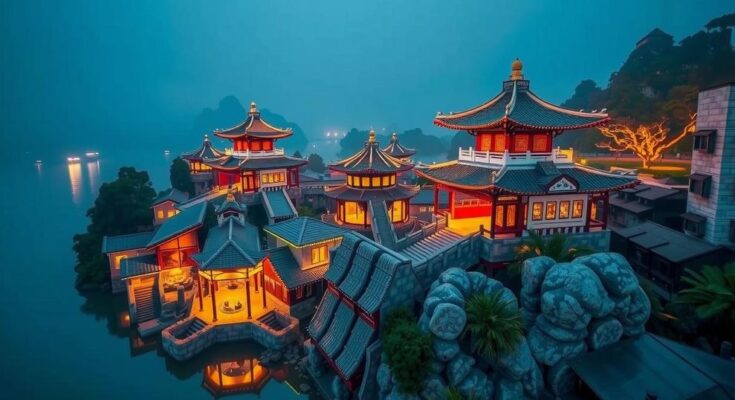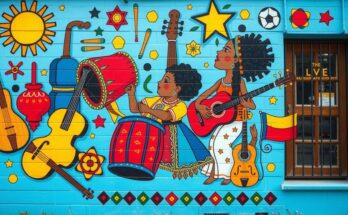The Liangzhu Culture Corridor, featuring the Archaeological Ruins of Liangzhu City, has highlighted ten significant scenic spots to enhance local tourism. Key sites include Yaoshan Altar, Mojiao Hill Palace, and the Liangzhu Museum, which collectively showcase the region’s profound cultural legacy and historical significance, inviting visitors to explore a tapestry of ancient stories.
The Liangzhu Culture Corridor, anchored by the Archaeological Ruins of Liangzhu City, creates a rich tapestry that intertwines cultural, ecological, and industrial threads across Yuhang District. Recently, local authorities unveiled the “Top 10 Scenes of Liangzhu Culture Corridor” following an engaging six-month online voting campaign aimed at enlivening tourism and cultural engagement. Shanghai Daily highlights these extraordinary sites worth exploring. Yaoshan Altar, an ancient site devoted to the gods, ancestors, and nature during the Neolithic era, stands as a silent witness to history. As the sun rises above the horizon, illuminating the altar with a sacred glow, the serenity crafted by nature’s symphony envelops the atmosphere, offering a majestic and tranquil experience. Mojiao Hill Palace serves as the heart of the Archaeological Ruins of Liangzhu City Park, which sprawls over a remarkable 3.66 square kilometers. Here, visitors can revel in the remnants of ancient palatial grandeur, stepping back into a time of glory while absorbing the deep historical significance embedded in the site. The Archaeological Ruins themselves represent a monumental discovery that captures 5,000 years of civilization. Excavations have unearthed early dam structures and agricultural areas, notably the well-preserved Shiwu Dam, exemplifying the Liangzhu civilization’s sophisticated engineering and harmonious relationship with nature. The National Archives of Publications and Culture in Yuhang is a prestigious repository for ancient texts and modern publications. It features exhibition halls, preservation areas, and communication spaces, housing invaluable archives that detail China’s profound history, while also facilitating research to bolster cultural exchange. At Jingshan Temple, rooted in the Tang Dynasty, lies the origin of the traditional Chinese tea ceremony. The temple became a pilgrimage hotspot during the Southern Song Dynasty, where the ritual of tea brewing, steeped in intricate performance and procedure, became ingrained in its spiritual practices. Nanshan Village boasts exquisite Buddhist grottoes from the Yuan Dynasty, where just 14 sculptures glorify the artistry of stone carving. These masterpieces, captured in dignified forms and rich details, reflect the high skills of craftsmen and the deep spiritual essence of Yuan-era Buddhism. The Liangzhu Museum, encompassing 9,500 square meters, stands as a striking juxtaposition of modern minimalism and ancient artistry. Its golden stone exterior mirrors the famous jade of Liangzhu, housing treasures that narrate the vibrant prehistoric cultures thriving in the Yangtze River Delta over five millennia ago.
The Liangzhu Culture Corridor plays a pivotal role in connecting cultural heritage sites, including the UNESCO-listed Archaeological Ruins of Liangzhu City. This dynamic corridor serves to enhance tourism by celebrating the distinct cultural landscape of Yuhang District, all while promoting local intellectual properties. The recent identification of top scenic spots reflects both historical significance and the promise of cultural vitality.
The unveiling of the “Top 10 Scenes of Liangzhu Culture Corridor” not only enriches local tourism but also deepens appreciation for the region’s historical and cultural treasures. From Yaoshan Altar’s serene sunrises to the artistic wonders of Nanshan Village, these sites collectively narrate a rich story of civilization, craftsmanship, and spiritual heritage.
Original Source: www.shine.cn



